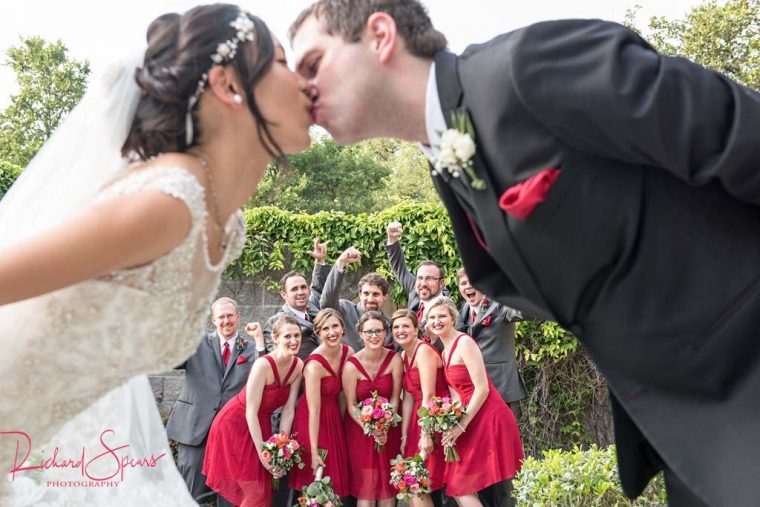A Digital SLR For Christmas!!
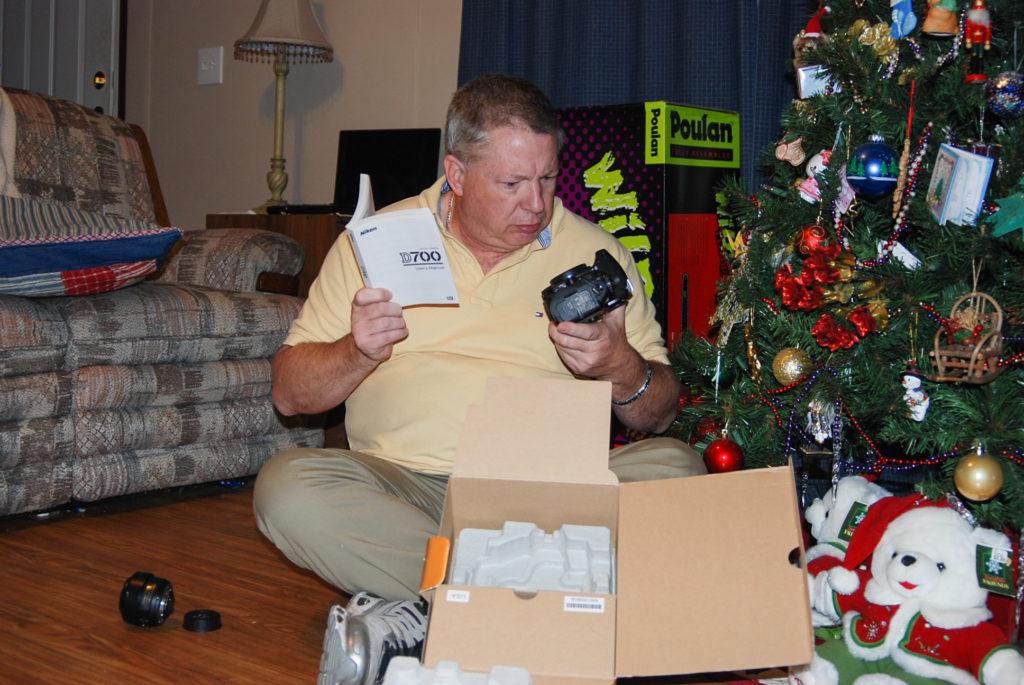
You tear open the wrapping paper, and you see the magic words “Nikon”, or “Canon”, or “Sony” You got a real camera for Christmas! Your very first DSLR! (Digital Single Lens Reflex) This is a big step up from a “Point-and-Shoot” or an iPhone camera. Whether the camera is for taking pictures of the kids, landscapes, or food, learning how to use a DSLR can be intimidating. All of the buttons and settings come together to make either an artistic photograph, or a complete mess. But relax, with a few simple pointers, you’ll be taking pictures like a pro in no time.
Get out and shoot
The good news is that most DSLR’s have very similar controls and settings, so it doesn’t take long to get the basics down so you can get out and start shooting. It doesn’t matter if your camera is made by Nikon, Canon, Fuji, or whatever. Read the Quick Start booklet that came with your camera. Put in the battery, and the memory card and let’s take some pictures! Ansel Adams once said “The first 10,000 photographs are the hardest” Digital film is cheap. Go out and keep shooting until you run out of room on your memory card, or your battery is dead.
Attach the Kit Lens
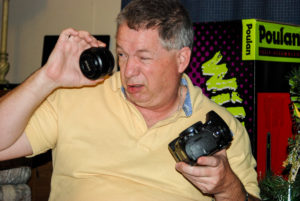 Your camera probably came with a “Kit Lens”, which is usually a standard zoom lens 18-55mm. To attach the lens, most cameras have a small dot that lines up with a similar dot on the lens. Put the dots together and turn the lens until it clicks into place. Don’t force it! Don’t forget to take the lens cap off! When you look through the camera’s eyepiece you can see through the lens. If you rotate the lens barrel, it makes the picture zoom in or out. Avoid the temptation to go out and get more lenses. You can accomplish just about everything you ever wanted to do with the lens that came with your camera.
Your camera probably came with a “Kit Lens”, which is usually a standard zoom lens 18-55mm. To attach the lens, most cameras have a small dot that lines up with a similar dot on the lens. Put the dots together and turn the lens until it clicks into place. Don’t force it! Don’t forget to take the lens cap off! When you look through the camera’s eyepiece you can see through the lens. If you rotate the lens barrel, it makes the picture zoom in or out. Avoid the temptation to go out and get more lenses. You can accomplish just about everything you ever wanted to do with the lens that came with your camera.Stay in AUTO Mode
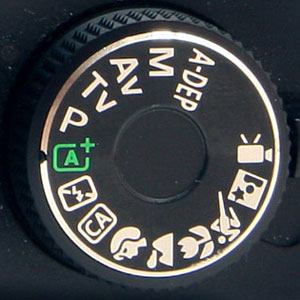 Most cameras will have a dial on the top or back of the camera to set the mode. I always recommend beginners to put the camera on AUTO and keep it there. This let’s the camera’s brain computer figure out the settings for a proper exposure. What about all those other buttons and settings? For now, “forget about it…” Too often, beginners obsess about learning all the manual settings for aperture, shutter speed and ISO (pronounced “Eye-Ess-Oh”) and they get frustrated. Instead of getting frustrated, get out and take a few thousand pictures. In time, you’ll learn to shoot in manual mode. In manual mode, you have full control over the camera settings, and that’s where you’ll learn to get those tricky artistic shots.
Most cameras will have a dial on the top or back of the camera to set the mode. I always recommend beginners to put the camera on AUTO and keep it there. This let’s the camera’s brain computer figure out the settings for a proper exposure. What about all those other buttons and settings? For now, “forget about it…” Too often, beginners obsess about learning all the manual settings for aperture, shutter speed and ISO (pronounced “Eye-Ess-Oh”) and they get frustrated. Instead of getting frustrated, get out and take a few thousand pictures. In time, you’ll learn to shoot in manual mode. In manual mode, you have full control over the camera settings, and that’s where you’ll learn to get those tricky artistic shots.
Picture Format (RAW or JPEG)
The only setting I would give some thought to and check would be the picture format, or sometimes referred to as picture quality (although quality doesn’t have much to do with it). As a beginner, you’ll want to shoot pictures in JPEG (pronounced “jay-peg”). Raw format gives you more flexibility in editing (or correcting) the pictures on your computer, but that comes later. If you shoot in JPG, you’ll be able to immediately share the images on social media or to your friends. Shooting in RAW means you’ll have to import the files onto your computer, and use an editing program to convert the images to a universal format for sharing. It’s easier to just stick with JPG in the beginning.
Memory Card
If your camera didn’t come with a memory card, you’ll need one. The most common types of memory cards are the SDHC. They come in all different capacities. An 8GB memory card can hold over a thousand JPEG images. The cards also have speed ratings. Get a good brand, with a high speed transfer rate. You’ve got a good camera, don’t buy the cheapest memory card! I recommend SANDISK Extreme Pro 64MB cards.
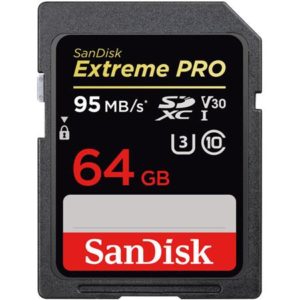
Shoot!
Once you have your battery, and memory card in the camera, settings on AUTO, and shooting JPEG, it’s time to take this baby on a test drive. Look through the viewfinder. When you press the shutter button half way, it will adjust the focus. When you press it all the way, you’ll hear the shutter click, and the image will appear on the LCD screen of the computer. If you’re indoors, and the light is dim, your camera may activate the on-camera flash. Not all camera models have a built-in flash, but most of the entry level DSLR’s do. It will use the flash when it thinks it needs it. Take pictures of the dog, the cat, your family, the Christmas tree, your garden, the mailman, and everything else. I challenge you to try and drain the battery or fill up your memory card with pictures.
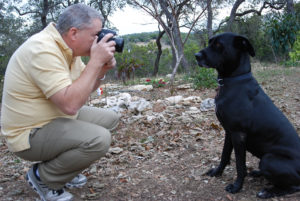
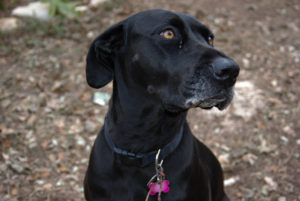
Downloading
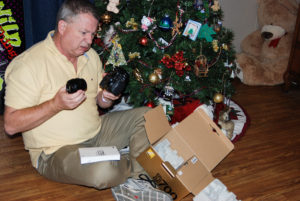 When you have finished shooting, it’s time to download the images to your computer. Check your user manual, but generally, you can do this two ways: connect a USB cable from your camera to the computer, or remove the memory card from the camera and put it in a card reader or SD slot on your computer. (A lot of newer computers have card readers built into them) Your PC or Mac can read the JPEG format, and you can view your work. As you become more advanced, you’ll want to be able to edit and correct some of the photographs. You’ll need a software program like Adobe Lightroom or Google’s Picasa to edit.
When you have finished shooting, it’s time to download the images to your computer. Check your user manual, but generally, you can do this two ways: connect a USB cable from your camera to the computer, or remove the memory card from the camera and put it in a card reader or SD slot on your computer. (A lot of newer computers have card readers built into them) Your PC or Mac can read the JPEG format, and you can view your work. As you become more advanced, you’ll want to be able to edit and correct some of the photographs. You’ll need a software program like Adobe Lightroom or Google’s Picasa to edit.
Gear Lust
One of the worst traps to fall into once you enter the world of DSLR’s is “gear lust”. This is where you convince yourself that you’ll be able to take better pictures if you have a better camera or better lens. I don’t know how many times, I’ve had someone contact me and tell me that the reason their images are blurry is because they don’t have the right kind of lens. While it is true that some equipment is better than others in low light, or fast moving sports action, the problem is usually six inches behind the camera. If this is a hobby that you are going to get into, take baby steps. Use your entry level camera and kit lens for a year before you start adding or upgrading equipment. During that year, learn everything you can about your camera. Learn about exposure. Learn about light. If you think you can’t produce quality photographs with a kit lens, check out some of the Flickr groups that only post images from a kit lens.
Useful Gear
- There are a few items that are extremely useful to beginners. There will come a time when you’ll need a flash unit, sometimes called a “Speedlight”. These flashes are more powerful than the on-camera flash and can be used very creatively. Although there are many brands that probably work with your camera, your first flash should be the same brand as your camera. This is important because the flash needs to “talk” to your camera. Many times, with off brand flash equipment, you have to set up the flash power settings manually. When I put my Nikon Flash on my Nikon camera, it always gives me a perfect exposure flash because the flash gets all of its settings from the camera. This communication between your camera and flash is sometimes referred to as TTL, which stands for “Through The Lens”, meaning that the flash gets the settings through the lens. Since I shoot with Nikon camera body, I originally bought a Nikon SB700 flash. These can be expensive. I recently bought a non-Nikon speedlight that I’ve been very happy with. You can read about it here: Yongnuo YN685 Trial by Fire
- The next item that you’ll need is a tripod. A tripod is essential for things like shooting at night. Tripods come in a variety of styles and brands. As a beginner, I always recommend just a cheap basic one. You’ll be amazed at how much sharper the image is when you use a tripod. You can usually find a decent tripod on Ebay for around $30.
- When the time comes that you’ll want to add a lens to your system, the one I always recommend is the 50mm prime. A prime lens is one that does not zoom in or out. It stays at a constant focal length. A 50mm (sometimes called the “nifty fifty”) is a beautiful portrait lens, and great for walking around the city doing street photography. The best part about the 50mm is that you can usually pick one up for less than $200. They are great in low light, and fast to focus.
- Light Modifiers/Diffusers: One of the enemies of good photography is harsh light. With harsh light, we get harsh shadows, and those bright shiny spots on people’s faces. One of the ways we fight this is with a diffuser on the flash. A diffuser spreads the light out, and softens it. One of the best purchases I ever made for my portraits and wedding work is the new MagMod system. You can read about it here: MagMod Toys
Learning
Some people seem to learn by reading books, others prefer to watch videos. There are literally millions of books and videos available to the novice photographer. Just the selection of material can be overwhelming.
Books
The “Digital Photography” series of books by Scott Kelby are some of the best. Kelby’s style of writing makes it easy to understand, and he throws in a lot of humor too.
Eventually, you’ll want to take the camera off the “AUTO” mode, and learn about aperture, shutter speed, and ISO. When that time comes, the best book for learning about manual settings is “Understanding Exposure” by Bryan Peterson. I’ve had this book for over two years, and I keep going back to it as a reference. It’s well written, and under $20, it’s a bargain.
I admit that I’m not a big fan of the “Dummies” series of books, but a lot of people love them. “Digital SLR Cameras and Photography for Dummies” by David Busch looks interesting, and again for less than $20 at Amazon.
Video
One of the biggest ways that the internet has changed our life, is with streaming video on the net. The amount of video tutorials available online is mind boggling. Do a YouTube search on the phrase “Photography Tutorial” and I got 285,000 results. Even though the videos are free, you’ll question whether some are worth that. Here’s a video that I found some time ago, and it explains the basics of exposure in a way that’s easy to understand. Here’s another one by the same kid, that explains metering and exposure stops.
If you’re looking for quality video instruction, I’d recommend KelbyTraining.com (No, I’m not on Scott Kelby’s payroll, he just does good work!) For a low subscription fee, you can watch all the videos you want. The one’s I’ve seen are all good. You’ll get video instruction by some of the top photographers in the country. From basics to advanced techniques.
Jenn Reviews
I was recently contacted by Jenn Miller who writes reviews on her blog. You can find reviews on camera equipment, and basics of how to choose a DSLR Camera. It’s sort of like Consumer Reports, only a lot better. Check out her review for beginner Photographers
Summary
Congratulations on your new Christmas camera, and the world of DSLR’s. It’s a money pit that is second only to golf and Harley Davidson motorcycles. The best way to get over the intimidation of the camera is to get out and take pictures. Then take a few thousand more. Don’t buy any more gear until you wear out the basic kit. You don’t need more gear to take better pictures. Photography is an art. Art cannot be achieved in a few days. You’ll need to study. You’ll need to learn. What are you doing reading this on your computer? Grab your camera and go shoot!
One Last Warning – You are NOT a Pro Yet
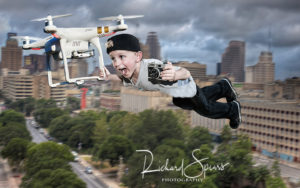 Let me give you one last bit of advice which will be ignored by a lot of you. Too often, I see people who are pretty good with a point and shoot camera, and then they buy their first DSLR camera and a decent lens for Christmas. Three weeks later, they begin advertising that they are professional portrait or wedding photographers. Don’t make the mistake of thinking because you have a good camera, and take some decent pictures that you are ready to go pro and begin taking people’s money. You’ll end up with some angry clients, and fellow photographers won’t think much of you. Make friends with photographers in your community. Take some classes. Some Facebook groups have meetings and photo walks where they will meet up and take lots of pictures with pros. If you are in the metro San Antonio Texas area, Contact me and I can either help you or point you to someone who can help you get started.
Let me give you one last bit of advice which will be ignored by a lot of you. Too often, I see people who are pretty good with a point and shoot camera, and then they buy their first DSLR camera and a decent lens for Christmas. Three weeks later, they begin advertising that they are professional portrait or wedding photographers. Don’t make the mistake of thinking because you have a good camera, and take some decent pictures that you are ready to go pro and begin taking people’s money. You’ll end up with some angry clients, and fellow photographers won’t think much of you. Make friends with photographers in your community. Take some classes. Some Facebook groups have meetings and photo walks where they will meet up and take lots of pictures with pros. If you are in the metro San Antonio Texas area, Contact me and I can either help you or point you to someone who can help you get started.
